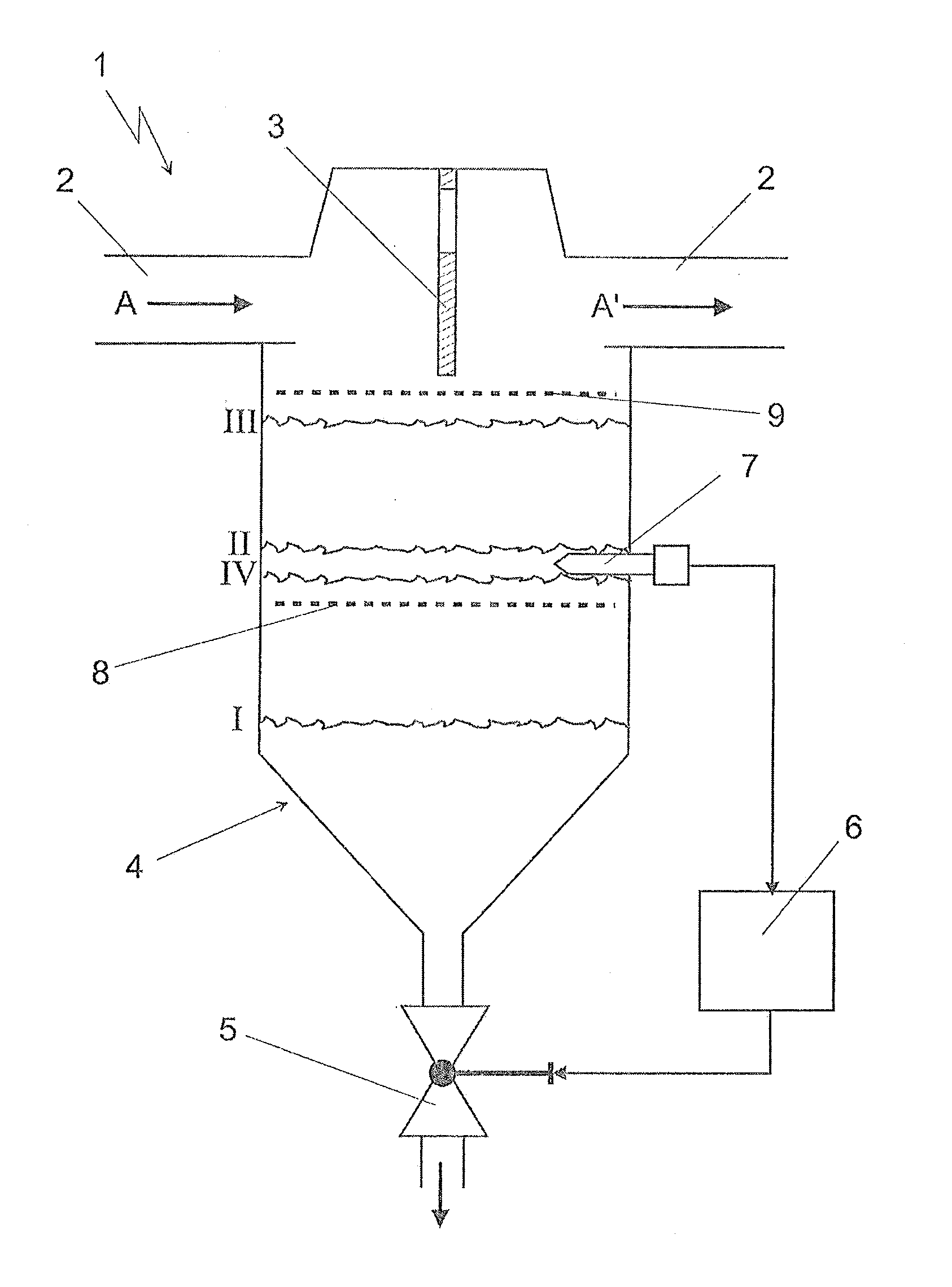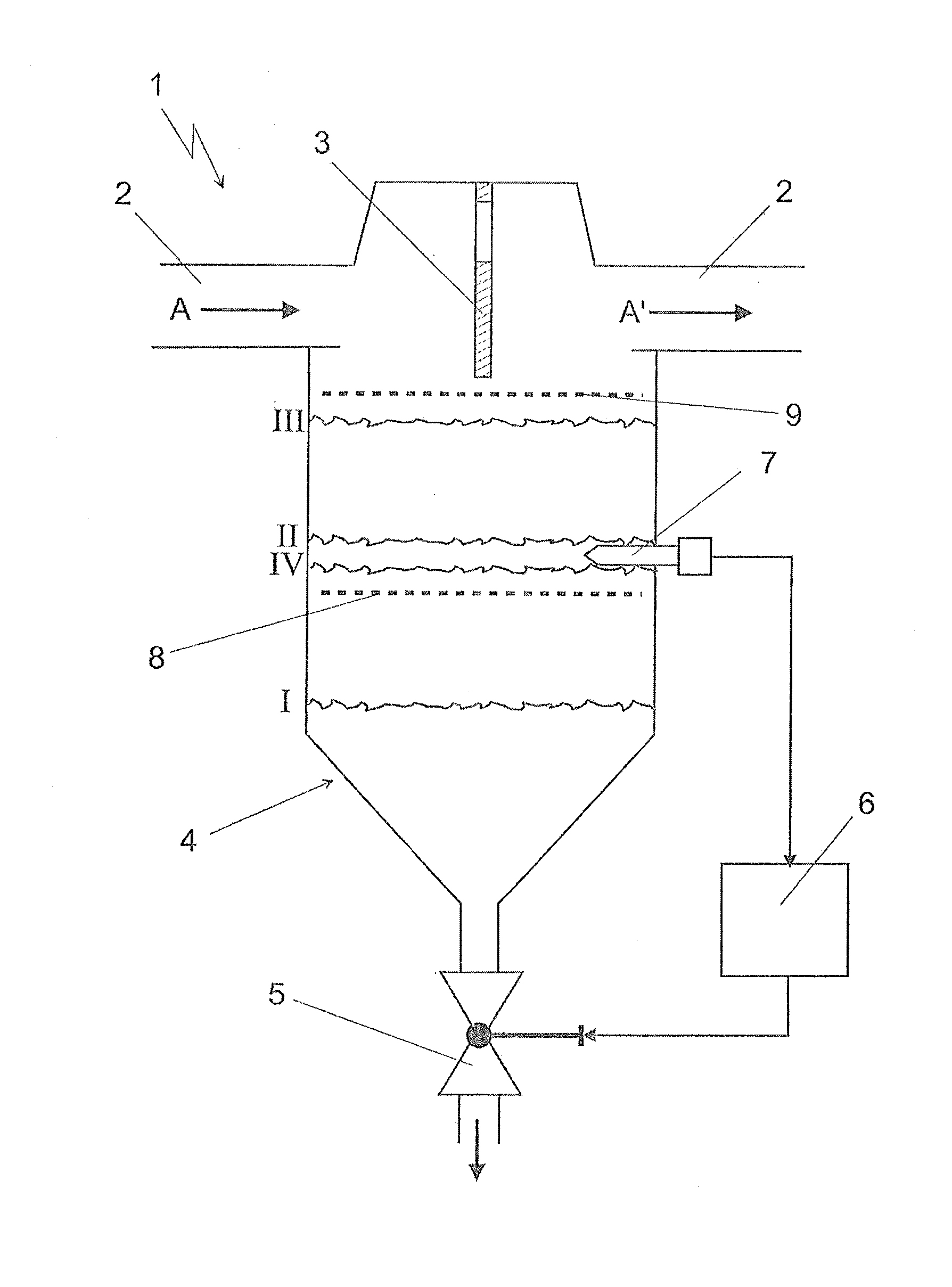Method for Discontinuously Emptying a Container
a container and discontinuous technology, applied in the direction of liquid transfer devices, instruments, liquid handling, etc., can solve the problems of requiring comparatively high resources, affecting the effect of emptying, and requiring a large amount of resources, so as to achieve convenient and fast emptying, convenient operation, and convenient operation
- Summary
- Abstract
- Description
- Claims
- Application Information
AI Technical Summary
Benefits of technology
Problems solved by technology
Method used
Image
Examples
Embodiment Construction
[0022]The drawing shows a schematically represented liquid separator 1, as can be used for example in a fuel cell system in a vehicle. The liquid separator 1 is arranged for this application in particular in the region of the cathode waste gas and / or the anode waste gas and separates liquid product water from the region of these waste gases. This is to be symbolized here through the line element 2, in which—as indicated by the arrow A—a gas is to flow together with condensed liquid. The gas then leaves the liquid separator 1 as gas A′ without liquid components. The liquid is correspondingly separated in the region of a baffle plate 3 while the gas A flows by this baffle plate 3 and / or undergoes a change in direction. The structure with the baffle plate is thereby selected purely by way of example. All other types of separating mechanisms can also be realized, for example a circulating gas flow, wherein the liquid particles are expelled outwards. This is of less importance, however, ...
PUM
 Login to View More
Login to View More Abstract
Description
Claims
Application Information
 Login to View More
Login to View More - R&D
- Intellectual Property
- Life Sciences
- Materials
- Tech Scout
- Unparalleled Data Quality
- Higher Quality Content
- 60% Fewer Hallucinations
Browse by: Latest US Patents, China's latest patents, Technical Efficacy Thesaurus, Application Domain, Technology Topic, Popular Technical Reports.
© 2025 PatSnap. All rights reserved.Legal|Privacy policy|Modern Slavery Act Transparency Statement|Sitemap|About US| Contact US: help@patsnap.com


